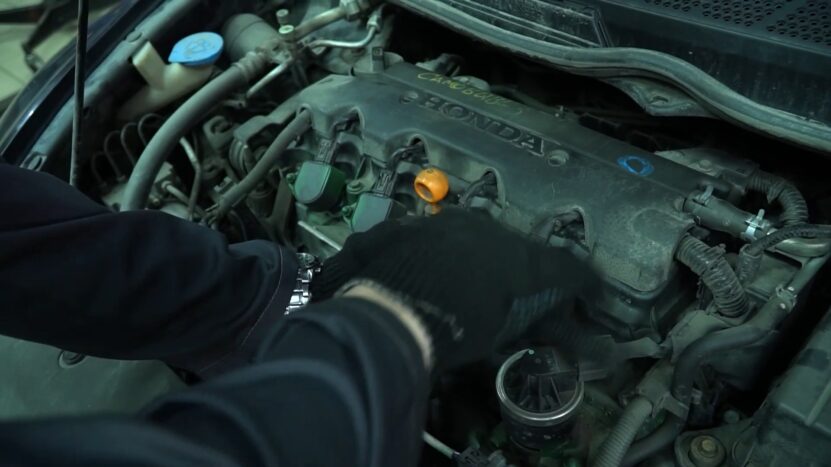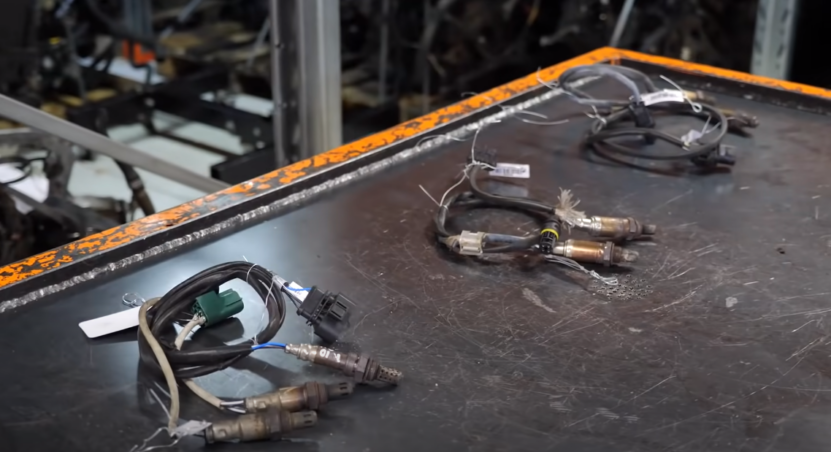The world of automotive diagnostics is filled with a myriad of codes and terminologies that can often be daunting for the average car owner. One such code that has been a topic of interest for many is the P0031 fault code.
In this article, we will delve deep into understanding this code, its implications, and the steps to rectify it. Whether you’re a seasoned mechanic or a car enthusiast looking to expand your knowledge, this guide is tailored to provide valuable insights into the P0031 fault code.
The P0031 fault code is a diagnostic trouble code (DTC) that points to a malfunction in the oxygen sensor heater circuit, specifically located in bank 1 sensor 1. But what does this mean for your vehicle?
The oxygen sensor, often referred to as the O2 sensor, plays a pivotal role in monitoring the amount of unburnt oxygen in the exhaust. This data is crucial as it helps the engine control module (ECM) adjust the fuel mixture for optimal performance and emissions. The P0031 code indicates a problem with the heater circuit of this sensor, which is essential for bringing the sensor to its optimum operating temperature swiftly.
Location Matters
For context, the term “bank” in automotive parlance refers to the side of the engine. Bank 1 is typically located near the exhaust manifold by the #1 cylinder head, while bank 2 is found on the 2nd cylinder head. Some engines might even have an oxygen sensor on each side of both cylinder heads.
Delving into the Oxygen Sensor

The oxygen sensor is a sophisticated piece of equipment, and understanding its intricacies is key to diagnosing the P0031 fault code.
Anatomy of the Oxygen Sensor
The typical oxygen sensor is equipped with four color-coded wires. Out of these, two are dedicated to the heater circuit. This heater ensures that the sensor reaches its optimal operating temperature in a short span, allowing for accurate readings.
Potential Issues
The P0031 code can arise due to several reasons:
- The heater wires could be shorted between the sensor and the ECM or even other engine components.
- Issues with wire insulation or routing, leading to wires touching hot engine parts.
- Wear and tear inside the heater circuit due to high mileage.
Troubleshooting the P0031 Fault Code

Before diving into expensive replacements, it’s essential to diagnose the issue accurately. Here’s a step-by-step guide to help you navigate the troubleshooting process.
Inspecting the Wiring
- Begin by checking the integrity of the oxygen sensor heater wires.
- Look for any signs of wear, loose connections, or wires touching hot engine components.
Tips:
- Use a digital voltmeter or ohmmeter (DVOM) to test the continuity of the heater wires.
- Ensure the wires are not touching the engine exhaust, as this can lead to short circuits.
Sensor Replacement
If the engine has clocked in a significant number of miles, the internal heater circuit might be worn out. In such cases, replacing the O2 sensor might be the best course of action.
Note: O2 sensor replacements can be pricey. Ensure you’ve diagnosed the issue correctly before proceeding with this step.
Additional Tips on Oxygen Sensor Symptoms

Understanding the symptoms associated with a malfunctioning oxygen sensor can be beneficial for early detection and rectification.
Identifying Rich or Lean Operations
The content of the engine exhaust gas can indicate if there’s a failure in the fuel mixture. A high signal voltage from the oxygen sensor denotes a rich engine operation, while a decrease indicates a lean operation.
Check Engine Light
If everything is connected correctly, cranking the engine should illuminate the check engine light. This is a clear indication of a potential issue with the oxygen sensor.
The Importance of the Heater Circuit

The heater circuit in the oxygen sensor is more than just a supplementary component; it’s a critical part of the sensor’s functionality.
Why Do We Need the Heater Circuit?
The oxygen sensor needs to be at a specific temperature to function correctly, typically around 600°F. The heater circuit ensures that the sensor reaches this temperature quickly, even in cold conditions. This rapid heating allows the engine control module (ECM) to receive accurate oxygen readings from the sensor without delay, ensuring optimal engine performance and reduced emissions.
Potential Heater Circuit Failures
While the heater circuit is robust, it’s not immune to failures. Common issues include:
- Blown fuses specific to the O2 sensor heater circuit.
- Damaged or corroded wiring.
- Malfunctioning relay or transistor controlling the heater circuit.
Using Diagnostic Tools Effectively

In the age of technology, leveraging diagnostic tools can be a game-changer when troubleshooting the P0031 fault code.
OBD2 Code Reader
An OBD2 (On-Board Diagnostics II) code reader or scanner is an invaluable tool for any car owner or mechanic. It provides access to the P0031 fault code and a plethora of other diagnostic trouble codes (DTCs) that your vehicle might store.
Tips:
- When you retrieve the P0031 fault code using an OBD2 scanner, note down any other codes that appear. These can provide additional insights into the root cause of the issue.
- Some advanced OBD2 scanners also offer real-time data, allowing you to monitor the oxygen sensor’s performance as the engine runs.
FAQ
Can I drive my car with a P0031 fault code?
While it might not cause immediate damage, driving with a malfunctioning oxygen sensor can lead to reduced fuel efficiency, increased emissions, and potential damage to the catalytic converter over time.
How often should I replace my oxygen sensor?
It’s generally recommended to check the oxygen sensor’s performance every 60,000 to 90,000 miles. However, always refer to your vehicle’s manual for specific guidelines.
Are all oxygen sensors the same?
No, there are different types of oxygen sensors, including heated and unheated sensors. They can also vary based on their location in the exhaust system.
Can a faulty oxygen sensor trigger the check engine light?
Yes, a malfunctioning oxygen sensor is one of the common reasons for the check engine light to illuminate.
How much does it cost to replace an oxygen sensor?
The cost can vary based on the make and model of your vehicle, the type of sensor, and labor charges. It’s always a good idea to get a few quotes from different mechanics.
Conclusion
The P0031 fault code, while technical, is not insurmountable. With the right knowledge and tools, diagnosing and rectifying this issue becomes a straightforward task. Whether you’re a professional mechanic or a DIY enthusiast, understanding the intricacies of the oxygen sensor and its associated fault codes can save time, money, and potential headaches down the road.